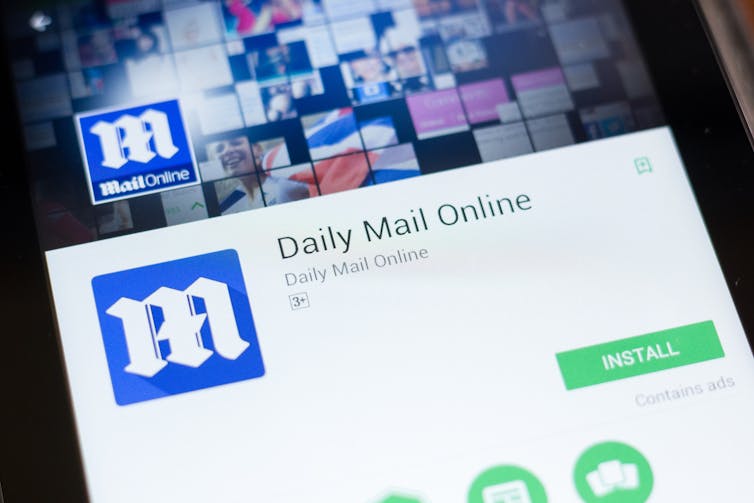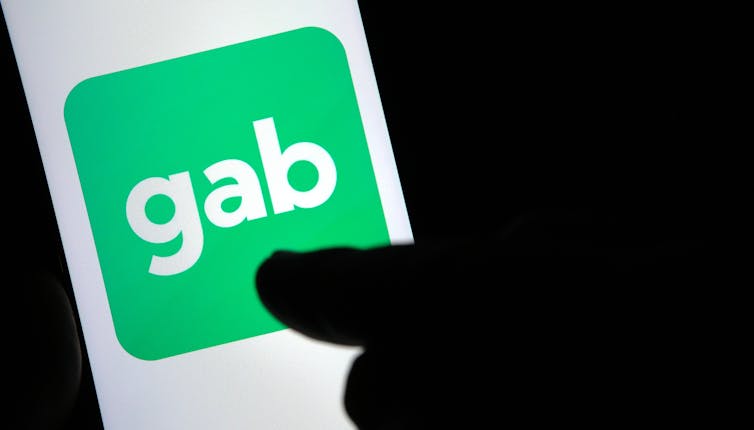Source: The Conversation (Au and NZ) – By Mario Peucker, Senior research fellow, Victoria University

Mistrust in the media is widespread among Australians, but this view becomes particularly antagonistic at the far-right fringe where mainstream media are typically viewed as “traitors” and the “enemy of the people”. This post from an Australian user on the far-right, social media platform Gab captures this common sentiment:
The corporate media are the enemy, they are traitors, they are collaborators, they are the number 1 barrier in the road to genuine and effective change.
Despite such aggressive opposition to the media, many within far-right communities read and prolifically share mainstream media articles. As part of a larger research program, we examined which media outlets were particularly popular and how far-right users utilise – or (mis)appropriate – these outlets to spread their message and attract new followers.
Read more:
Twitter for the right: a look at Truth Social, Trump’s ethically dubious social media platform
An analysis of far-right postings
To answer these questions, we analysed over 56,000 posts by 90 far-right online accounts on Facebook and Gab.
Some users seem to deliberately refrain from posting any mainstream media content; this applied to around half of all 40 analysed Gab accounts. One of them made their view on this very clear:
I am now muting anyone who posts trash fake news links news.com.au or daily mail. I come here to get away from that shit. Support alternative media don’t give these fake news fuckers any extra exposure.
But that was only half of the story. While links to far-right or hyper-partisan fringe platforms and blogs were frequently posted, almost 60% of posts with an outbound URL link (not including links to other social media) shared mainstream media sources.
Most popular sources
Links to media outlets from across the political mainstream spectrum, from progressive to conservative, were posted. There were, however, significant quantitative differences.
Read more:
Parler: what you need to know about the ‘free speech’ Twitter alternative
In the Facebook dataset, The Daily Mail was the most commonly shared media source with 430 posts sharing one of its articles, followed by ABC (337), Sky News (318), 7News (206), News.com.au (175) and The Australian (174).
In the Gab dataset, the two by far most frequently shared were Sky News (3,131 posts) and The Daily Mail (1,851), followed by News.com.au (675), ABC (604), and The Age (227). The Australian and The Sydney Morning Herald tied with 226 posts each.

Shutterstock
What these figures do not tell us, however, is how mainstream media are (re)framed for ideological messaging in these far-right online spaces. To explore these questions, we conducted an analysis of 522 quasi-randomly selected posts that shared a mainstream media source.
How mainstream media is reframed for right-wing readers
We found partisan media content, such as editorials and opinion pieces, predominantly from conservative, right-leaning media outlets were almost always shared in an affirmative way. This content was posted to articulate and support ideological tropes prominent within far-right online communities.
In the analysed Gab sample, for example, almost all of the partisan media outputs shared affirmatively were from right-leaning media outlets, most prominently Sky News, The Herald Sun and The Australian.
Neutral news articles are also frequently posted, though users often post their own accompanying thoughts (57.6% in the Facebook sample; 23.2% in the Gab sample). A News.com article titled ‘Anti-maskers vandalise Federal Health Minister Greg Hunt’s Melbourne office’, for example, was shared by a Gab user with the additional text:
‘A load of BS. This is a typical article turning anyone who does not agree with them into a “terrorist” …Besides Greg Hunt is a Globalist Dunderhead who is in bed with the UN and especially WHO’.
News reports from mainstream media sources are co-opted for ideological messaging in different ways.
Read more:
How political engagement on social media can drive people to extremes
We found that balanced news reporting that presents different perspectives on an issue can be used for ideological messaging by selectively amplifying and politicising one perspective. Even critical news reporting from more progressive outlets, for example about alleged government wrongdoing, was co-opted to articulate a much more radical and ideological anti-government stance.
Relaying an ideological message
Neutral news articles are often shared without additional content, especially on Gab (53.0%), but the user can still send an ideological message that is clearly ‘heard’ within the context of these online communities. This posting pattern relies on news reports on issues that are politically charged within the far-right community like multiculturalism, immigration, climate change or allegations of government overreach. We call this posting pattern ‘contextual messaging’.

Shutterstock
For example, a Gab user posted an SBS article about a local council in Sydney that decided to pay childcare costs for asylum seeker families. The post only cited the article’s headline: “These asylum seeker families are being given free childcare in Sydney”.
Within the ideological context of these far-right online communities, this post signals disapproval, possibly alluding to allegedly preferential treatment of refugees. The comments responding to this post showed this is how the message was ‘heard’ and understood by the Gab audience.
Contextual messaging is used in different ways to subtly relay an ideological message to likeminded others. Almost one in ten Gab posts we analysed (3.6% in the Facebook sample) shared a mainstream media source to express the user’s opposition to another media outlet or mainstream media more generally.
A number of articles from left-leaning or centrist news outlets such as The Guardian (“fake news peddler”), SBS (“Marxist media”), the ABC (“Brainwashed globalist shills”), and The Age (“foul media operation”) were shared in this way.
Content from more conservative media was occasionally posted to praise the respective outlet while attacking other (more left-leaning) outlets for their alleged agenda or bias.
Our research is not intended to point fingers at any particular media outlets for providing content for far-right online messaging. Instead, we conclude that no media outlets, whether right, left or neutral, are safe from being co-opted and re-purposed to suit right-wing ideologies. Groups will utilise whatever sources are available, including ones they’ve labelled the “enemy of the people,” to convey their messaging.
![]()
Mario Peucker has received funding from the Victorian Government. He is affiliated with the Centre for Resilient and Inclusive Societies (CRIS) .
– ref. How far-right online spaces use mainstream media to spread their ideology – https://theconversation.com/how-far-right-online-spaces-use-mainstream-media-to-spread-their-ideology-189066







